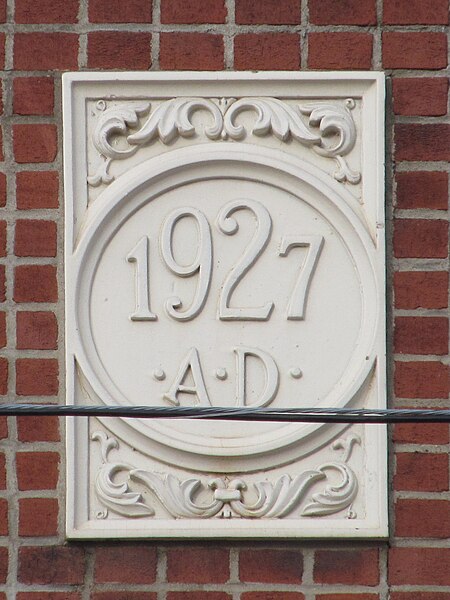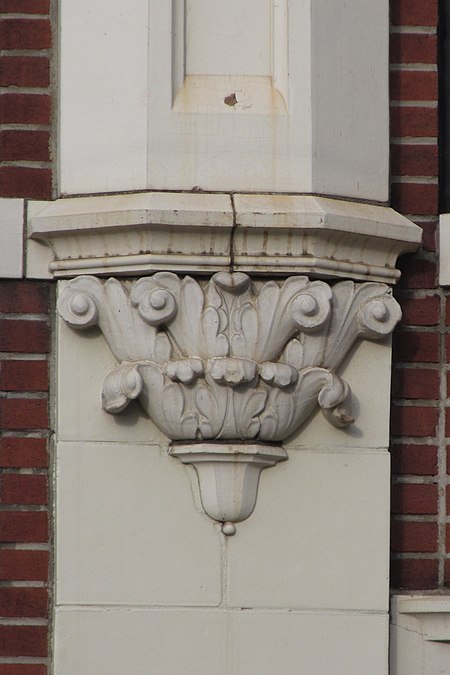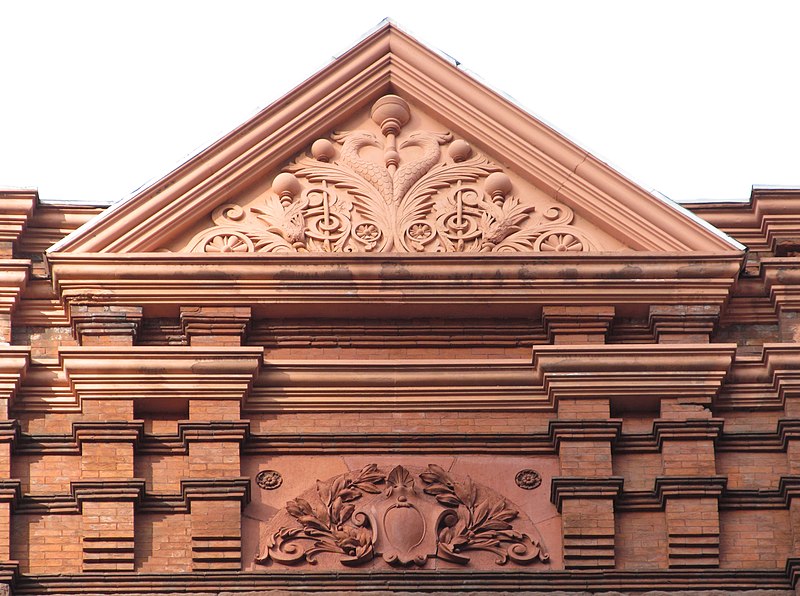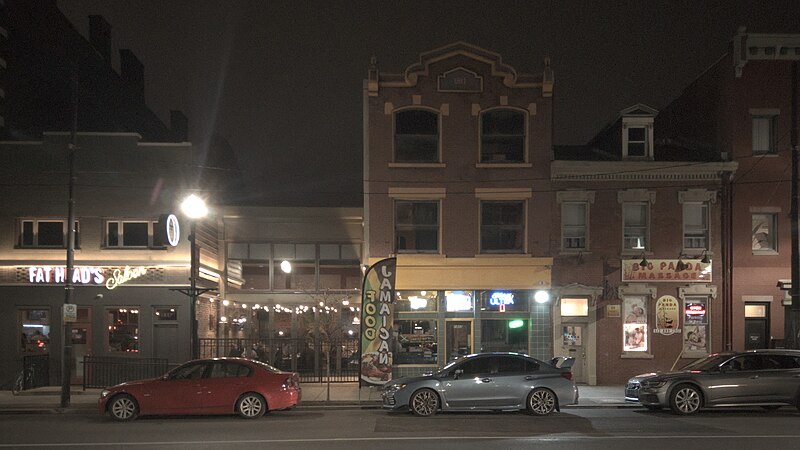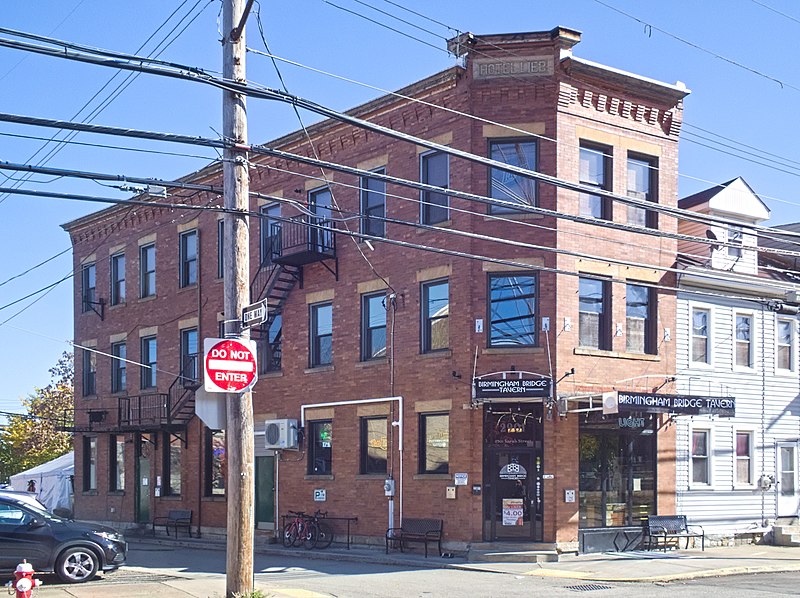
This meticulously restored storefront probably had workshops of some sort on the second and third floors: look how the windows are arranged to maximize the penetration of natural light as far back into the building as possible. In fact the current tenants on the second floor apparently find it too penetrating, to judge by the effort they have put into blocking it. In our age of ubiquitous electrical illumination, we forget what a problem lighting was in the old days. Gas lighting was dimmer than electric, and it produced much more heat even than incandescent lighting, which was a serious disadvantage in the summer. Thus free sunlight—or, in Pittsburgh, attenuated smog light—was zealously hoarded.









